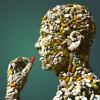I would just like to weigh in on this matter, since people are more and more beginning to think this slight molecular enhancement (albeit a greatly efficacious enhancement) somehow gives it a stimulant effect. While of course this much increased bioavailability causes its supplementation to wield near phenomenal cognitive and/or therapeutic benefits that can make it seem to wield stimulant properties, this is not the case. To rectify this recent common skewed perception of the pro-vitamin, I would just like to expand on something...------
Sulbutiamine as we all know is one of a few biosynthetic, molecularly enhanced versions of thiamine, or vit B1; and rightfully the most noteworthy. It was biosynthesized during attempts to find an efficient way to improve the absorption rate of the 'thio-vitamine'. While Thiamine (namely, estered thiamine) itself can improve cognitive abilities, we know it to have a lower absorption rate, thus less of it actually getting to the brain to increase your factors of intelligence. The sulbutiamine molecule tends to many of these absoprtion difficulties by making this essential nutrient, lipid soluble; so that it absorbs into your blood far more easily. This modification also makes Sulbutiamine capable of better transportation across the blood-brain barrier where it can better interact with the CNS; rather than almost solely acting on the PNS. Supplementing yields significant therapeutic results because the far less bioavailable thiamine we commonly receive from food and B complexes rarely comes anywhere close to entering the encephalon in efficient amounts, therein is not capable of yielding results. The more common routes of thiamine supplementation (mononitrate or HCL) are transported through the peripheral body regions with much greater ease than in attempts to transport these thiamine preparations beyond the blood-brain barrier. Of course, the body understand the need for thiamine in the cephalic; however when great amounts are needed in the peripheral as well, the easier transportation throughout the peripheral causes a much greater amount of the non-excreted thiamine to be carried to the places in the upper and lower body that need rejuvenating kick towards regeneration.. This then leads to the very minute amount of [the estered forms] thiamine left to be transported beyond the BBB. These esters of thiamine take a bit of metabolic energy for your bodily mechanisms to create before the thiamine passes along, later then to be counted among all the other metabolites of the numerous metabolized biochemicals being prepared for excretion.
------
well if anyone actually took the time to read all that and is able to retain the more significant points I exhibited above, then you may recognize my purpose in doing so.
I may have wrongly perceived my peers' understandings of the molecule's overall profile but if that is so, I feel that which I elaborated on above is still significantly needed to help in the correction of skewed understandings of Sulbutiamine.
: P.S.notation
The recent mass influx of curiousity-induced impulse research (don't get me wrong, I love to see more and more adults and young adults researching interesting bio-topics) often results in a slightly lacked grand understanding of biochemicals, biosynthetic molecules, and so on.
I hope very much that the above can lend you a helping hand in your future researched endeavors by helping you build a more in-depth understanding of some of the more basic biomechanics and biomechanisms; as well as help some balance their overall profile towards this pro-vitamin/prodrug-like enhanced bio-regulatory molecule.

















































